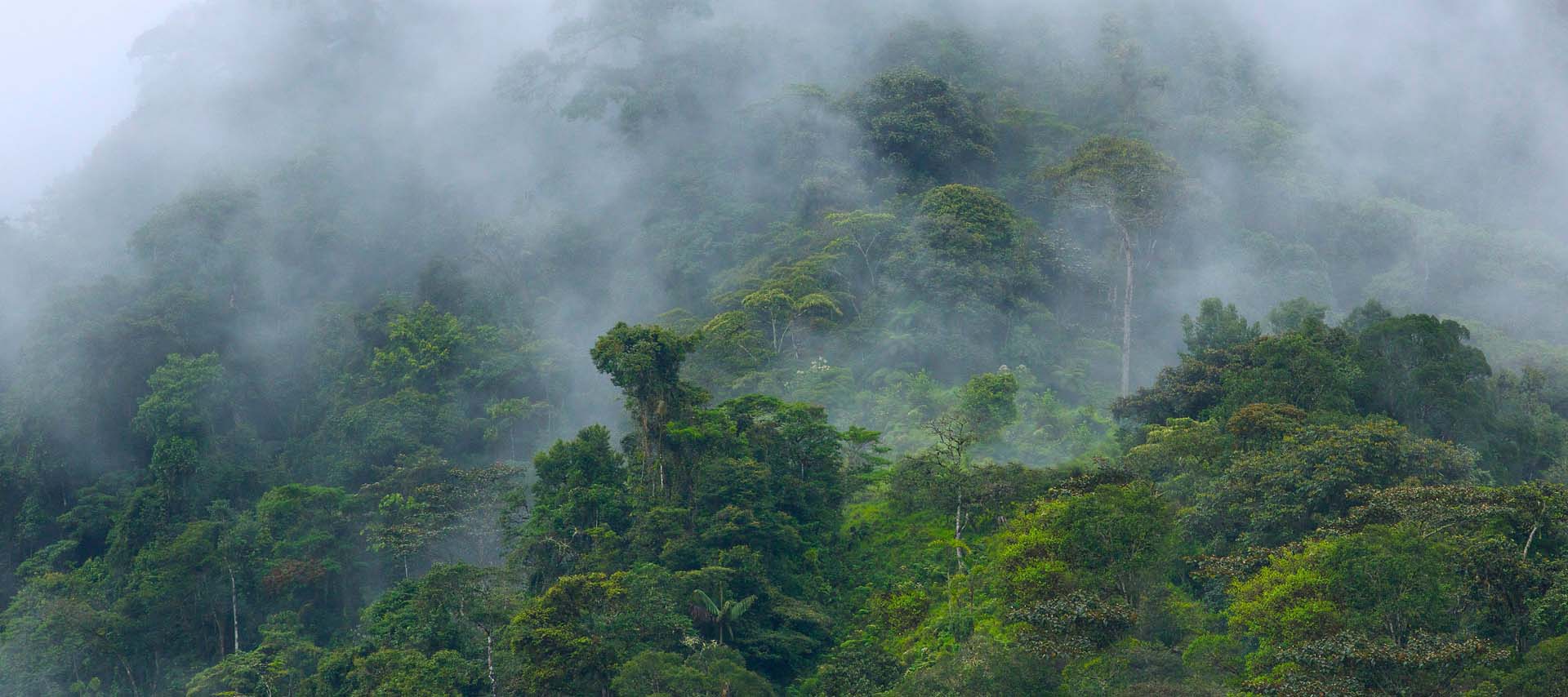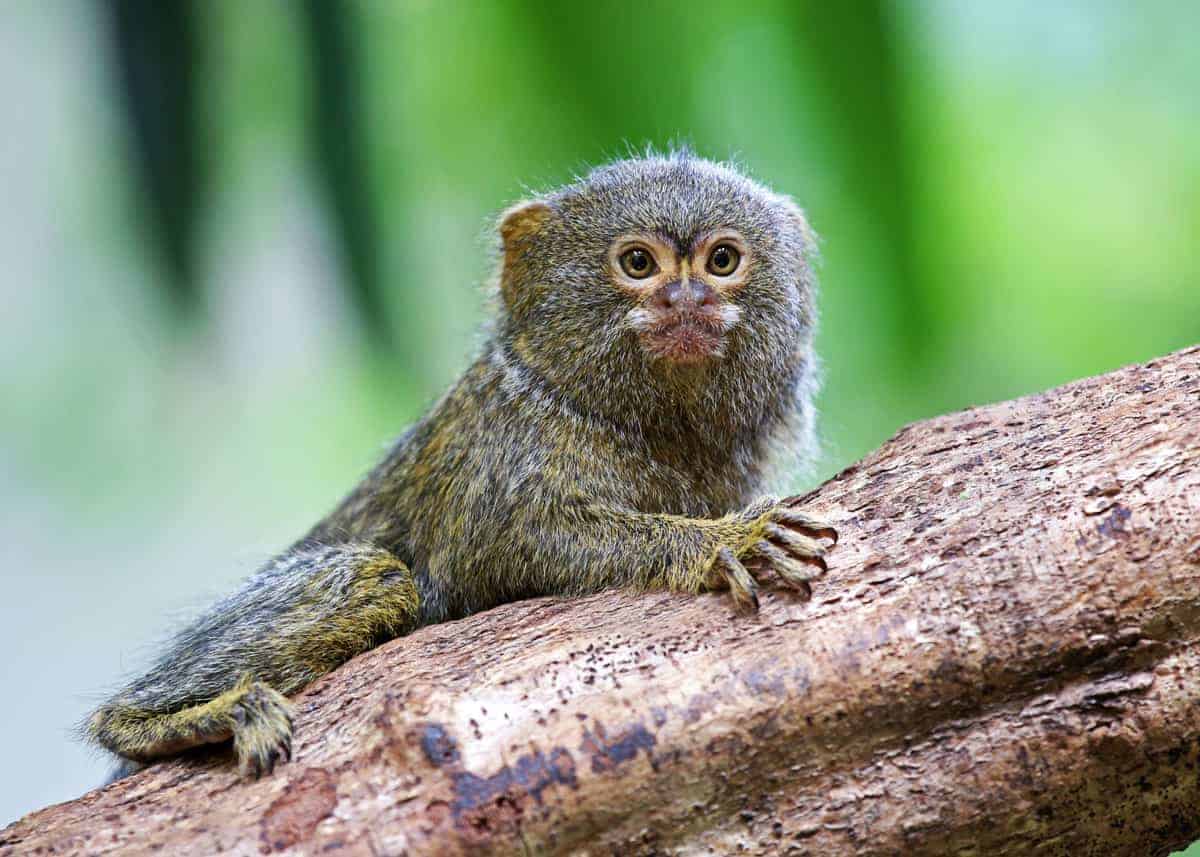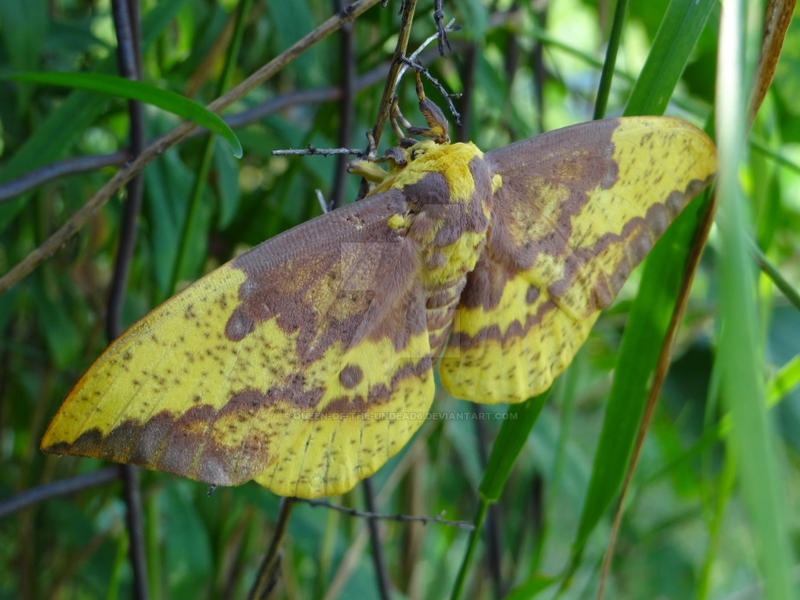Tropical rainforests are rich habitats for a huge variety of plants and animals project. Enter a hot, damp, and shady world.
Time for the umbrella
A rainforest is warm and sticky, with frequent downpours. The trees take up much of the rain, but water vapor soon evaporates from their leaves, filling the air with moisture.
Bursting with life
Tropical rainforests cover just 7% of Earth's land, yet contain over half of the world's species.
- Beetles One scientist found 18,000 species of beetles in one small area of rainforest.
- Trees A football pitch-sized patch of rainforest may contain 300 trees.
- Orchids New orchids are continually being discovered in rainforests.
- Birds The Amazon alone contains a third of Earth's 9,000 known bird species.
Rainforest Layers
A rainforest is like a block of flats, with different residents at different layers. There are four main levels.
- Emergents are the high treetops that poke out above everything else.
- The canopy is made up of the majority of the treetops. It is a forest's leaky roof.
- The understorey is made up of short trees, shade-loving plants, and lianas.
- The forest floor is a thick carpet of dead leaves, ferns, and the buttresses of tree roots.
Cloud forest
In mountainous areas, rainforests may be so high that they're cloaked in clouds. The heavy moisture encourages lush plant growth. Most of the rainforest animals live in a canopy excluding worms in the leaf litter.
In the treetops
Much of the life in a rainforest exists way up in the canopy. It is a refreshingly breezy, but sunny place to live. There are many flowers in the canopy and some canopy plants flower six times a year.
Survival at the top
Many rainforest plants have to compete for light. Some do so by starting life on top of other plants.
A weighty problem
Plants that grow on tree trunks are called epiphytes. Epiphytes can eventually grow so heavy that a branch may fall under its weight. Some tree branches is covered with epiphytes or air plants.
A green bucket
Bromeliads are a type of epiphyte. Their leaves form a tight circle that catches rainwater. Their roots are purely for holding on they do not steal the host tree's nutrients. Bromeliads provide a home for lots of small creatures.
Getting around
Animals have solved the problem of getting from treetop to treetop in a variety of ingenious ways.
- Gibbons swing from tree to tree using their hands to grip and hold. Siamangs are the largest of all gibbons. Many gibbons live in the trees.
- Monkeys scamper about. Some use their tails as an extra limb.
- Lemurs make bold leaps between trees, using their long tails for balance.
- Birds fly from branch to branch, ready to take off if danger threatens.
- Kuhl's flying gecko glides through the air, using its webbed feet.
- Flying snakes have flattish bodies and form an S-shape to let them glide.
- Tree kangaroos use long claws on their hands to grip tree branches.
- Orang-utans swing on lianas or use their weight to bend small trees down.
Nutcrackers
The canopy is full of fruits and nuts all year. Many animals and birds specialize in getting at this food. Aracaris will eat more than 100 different types of fruit if they can find them.
Pocket-sized monkey
The pygmy marmoset is the world's smallest monkey. It lives in the treetops of the Amazon jungle, searching for fruits and insects.
It's good for us
Many rainforest seeds are poisonous. Macaws get around this by eating clay before their seed meal. A mineral in the clay absorbs the poisons in the seeds.
In the Shade
The understorey and forest floor are darker and damper than the canopy. With still air and little or no direct sunlight, they provide a haven for moisture-loving plants and animals.
Crabs in trees
On some rainforest-covered islands, crabs climb trees and scurry over the forest floor, looking for dead bodies to scavenge.
See-through butterflies
Glasswings are delicate butterflies that live in gloomy parts of the understorey.
What a stink?
Sumatra's Rafflesia is the world's biggest flower, though it is more like a fungus. Its rotten smell attracts the insects that pollinate it. The flower lasts for just one week. Rafflesia flowers grow about 1m (3ft) in width.
Death by suffocation
Boa constrictors don't have fangs or poison, so they kill prey by squeezing until the animal dies of suffocation.
Shy and secretive
Troops of silverback mountain gorillas roam African rainforests during the day. These secretive forest animals spend most of their time on the forest floor.
Stick to me
Chameleons have extremely long tongues. A thick, sticky pad on the end means a quick end for the chameleon's victim. A chameleon's eyes can swivel in different directions.
Forest flavors
Many of the flavorings we use in food come from rainforest understorey plants.
- Chocolate comes from the beans of the South American cacao tree.
- Vanilla ice cream gets its flavor from the seed pods of a climbing orchid.
- Ginger biscuits are flavored from the root of a plant from S E Asia.
Killer plant
The strangler fig starts life in a large tree as an epiphyte. Over the years, it wraps roots around the host's trunk and gradually chokes the tree to death.
After the host's death, the strangler's roots will remain as a hollow cage.
Crazy Frogs
Warm, damp rainforests make an ideal home for frogs and toads, and there is an almost endless variety of these creatures.
Leaping for safety
Tree frogs have much longer back legs than the front, so they can leap away from danger or leap in pursuit of a tasty fly. Frogs have four fingers on each of their front limbs, and five on their hind limbs.
I can fly!
Wallace's flying frog has huge webbed feet that act like tiny parachutes when it jumps through the air. allowing it to glide. It can fly a whopping 15 m (49 ft)!
Hiding from danger
Many rainforest animals enjoy eating frogs and toads, so they need to protect themselves. One way is to use camouflage. The Asian horned toad almost disappears on a bed of rotting leaves.
Sticky fingers
Tree frogs have swollen fingertips with sticky suction cups so they can cling to leaves and twigs.
Baby matters
Some rainforest frogs have unusual ways of helping their young to survive. These amphibians don't simply hatch as tadpoles in ponds.
- Gastric brooding frogs swallow their tadpoles, releasing them when grown.
- Rain frogs develop inside their eggs, stuck to the leaf of a tree.
- Surinam toad females carry their eggs on their back, beneath their skin.
Poison-dart frogs
Some of the most colorful of all frogs use their patterning as a warning that they are extremely poisonous to eat. Poison-dart frogs eat poisonous insects and store the poison in their skin.
Translucent skin
Glass frogs are almost see-through, which helps them to blend in with their surroundings. These curious-looking frogs live in trees that overhang the water. There is no clear difference between a toad and a frog. Toads typically have warty skin.
Jungle Bugs
Rainforests are home to more species of insects than anywhere else. They include the biggest, deadliest, loudest, and weirdest! There are more than a million species have been identified.
Farming the forest
Leafcutter ants cannot eat the leaves they carry back home. They harvest them to grow a fungus, which they eat. Leafcutter ants form pathways to carry leaves to their nest.
Praying for dinner
The praying mantis hunts by stealth. It remains motionless, then springs forward to catch its victim. The victim, a fly, is caught before it has a chance to react
Let me eat, eat, eat
Butterflies are a common sight in rainforests. This means there are lots of caterpillars to spot chubby little eating machines.
Stick your neck out
The giraffe weevil has an extraordinarily long neck, but nobody knows why! It can bend its neck to look under leaves.
Living jewels
Iridescent markings help this butterfly find a mate in the forest. The flash of bright color may also confuse a bird that wants to eat it.
This morpho has a wingspan of about 10 cm (4 in).
Tasty tears
Butterflies visit flowers to feed on nectar, but nectar is short of salt and other minerals. These butterflies are collecting those missing minerals from a turtle's eyes and nostrils.
Alien empire
Some insects hide from danger by disguising themselves as leaves and sticks. Spikes on this nymph's head, body, and legs help it to look like a thorny plant.
Record-breakers
When it comes to bugs, rainforests are home to many of the world's record-breakers.
- African Goliath beetles are the heaviest insects, reaching 100 g (3.5 oz).
- Brazil's goliath bird-eating spider is the world's largest spider.
- Malaysia's giant stick insect can reach 55.5 cm (22 in) in length.
- This click beetle produces the most light of any insect enough to read by!
- Mosquitos are the deadliest insects, spreading a sickness called malaria.
- Queen Alexandra's birdwing butterfly is huge, reaching 28 cm (11 in).
Night Life
If you venture into a rainforest at night, you will soon realize that the forest never sleeps...
Night flowers
Some flowers, like the shaving brush tree, are pollinated by bats and so they only open at night. If a flower looks like a brush, it's probably pollinated by bats!
Mega moths
The night-time rainforest is full of moths, which flit around trying to find flowers or each other using their incredible sense of smell. The atlas moth is the world's largest moth. Moths fly into the light because they mistake them for stars and think they are flying upwards.
Vampire bat
A vampire bat's saliva contains an anesthetic, so the victim doesn't feel the bat lapping up their blood.
Fairy lanterns?
Strange, glowing lights on the forest floor are luminous mushrooms. On a ghostly night time some mushrooms glow will attract insects.
Seeing in the dark
Bushbabies have huge eyes to help them see at night. Their eyes are sensitive, so they avoid bright light as it can damage their eyes.
Slippery snake
Snakes can hunt in complete darkness, using their tongue to taste the air for the smell of prey. The eyelash viper also has special heat-sensing pits on its head.
On the prowl
Many rainforest animals are nocturnal, which means they wake up at night and begin to hunt. Ocelot hunts with its head lowered to pick up the scent of its prey.
Rainforest Rivers
Rainforest rivers are frequently muddied by the amount of silt that washes into them following rain, but many animals make a good life in them.
A bendy solution
The Amazon river dolphin has a very flexible neck. It uses this ability to get around tree roots.
Through the jungle
Rivers snake through rainforests, carrying excess rainwater towards the ocean.
Dangerous fish
A shoal of red-bellied piranhas can strip an animal to the bone in seconds. They eat by slicing off chunks of flesh, using their sharp, triangular-shaped teeth. Not all piranhas are dangerous, most piranha species are harmless.
Just another catfish
There is a huge variety of catfish, in fact, three-quarters of all freshwater fish are catfish or related to catfish. This catfish reaches about 60 cm (2 ft) in length.
Walking on water
The basilisk lizard can run on water. As basilisks get older they get too heavy and can't run so far on water.
A giant in the river
The world's heaviest snake is the green anaconda. A snake this size is capable of killing deer and caimans. Anacondas squeeze their prey to death.
Walking underwater
The nine-banded armadillo is able to walk underwater. It can hold its breath while it crosses a narrow stream. Its armor provides a tough defense. This armadillo has nine bands of bony carapace between its shoulder and rump.
What a whopper?
The giant otter can grow to almost 2 m (6 ft) in length, making it the world's largest otter. River otters use rocks as hammers to smash shells.
Jungles of Asia
Southeast Asia's rainforests are spread over a number of islands and contain some animals found nowhere else.
A rare sight
The Sumatran rhino is one of the rarest animals of all just 300 or so exist. It is also the smallest and hairiest of all rhinos, although its coat of hair is rather sparse.
A suit of armor
The pangolin hides in a burrow by day and emerges to hunt at night. Its scales form a flexible shield. A pangolin has no teeth and a path pangolin uses its long tongue to collect ants and termites.
Person of the forest
Orang-utans are closely related to human beings and chimpanzees, and they are just as clever as chimps. They spend much of their life in trees even making a nest and sleeping there.
Ready for lunch
Pitcher plants contain small pools of syrupy liquid. Insects fall into the pools and drown.
Clouded leopard
The clouded leopard is one of the only cats that can climb down a tree headfirst it rarely gets stuck. The clouded leopard's prey includes monkeys, gibbons, young wild boars, birds, and deer.
Ever watchful
Instead of moving its eyes like us, a tarsier can turn its head 180° in both directions to look behind it. Each one of the tarsier's eyes is so big that each is heavier than the animal's brain. The size of its eyes provides excellent night vision.
Jewel of the forest
Rajah Brooks birdwing butterfly is a spectacular butterfly that has a wingspan about the length of your hand. When large groups of birdwings gather to drink from puddles, it's a very pretty sight. The Rajah Brook's wings are shaped rather like a bird's wings.











0 Comments